Powerful Protein is more than just fuel for your workouts—it’s your body’s ultimate building block. Did you know that protein makes up about 16% of your body’s weight? That’s everything from your muscles to your skin to your organs. Yet, not all proteins are created equal. Choosing the right sources can mean the difference between feeling sluggish and energized, between hitting your fitness goals and falling short.
This isn’t about eating more chicken breasts—it’s about optimizing your choices. We’re talking lean meats that pack a punch, nutrient-dense seafood, and even plant-based powerhouses. Each option on our list of 7 Powerful Protein Choices for Healthy Life checks the boxes for taste, quality, and impact. Whether you’re aiming to build muscle, recover faster, or feel fuller throughout your busy day, these proteins will change the way you think about your meals.
Keep reading to discover how the right proteins can fuel not just stronger muscles, but a stronger you. Plus, you’ll pick up tips on integrating these powerful protein sources into your diet—smartly and deliciously!
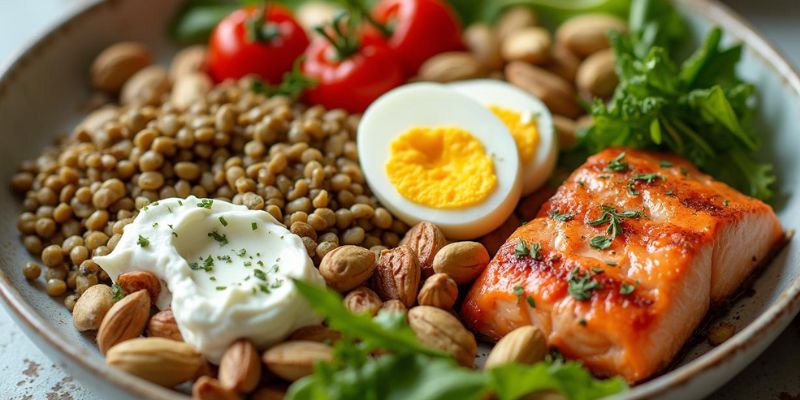
What Makes Protein Powerful?
The Role of Protein in Health and Strength
Proteins are the body’s unsung heroes. They are essential for muscle growth, tissue repair, and even maintaining a robust immune system. Think of them as construction workers, constantly building and repairing your body. Without enough protein, you experience fatigue, slower recovery, and even muscle loss over time.
But that’s not all. Protein also keeps your energy levels stable. By slowing the digestion of carbohydrates, it helps you avoid the dreaded blood sugar spikes and crashes. Want to stay full longer? Protein has your back.
Why the Right Protein Matters
Not all proteins are created equal. Complete proteins, like those found in animal products, provide all nine essential amino acids your body needs to function. Meanwhile, plant-based options often need to be paired with complementary foods to ensure you get the full profile of amino acids.
Bioavailability is critical too. Some protein sources, like eggs and whey, are highly bioavailable, meaning your body can easily absorb and use them. Choosing high-quality options ensures you’re getting the most out of what you eat.
Understanding Powerful Protein Sources
Powerful Protein is defined by its nutrient density and adaptability. Whether you prefer animal-based proteins or plant-based options, the key is finding sources that fuel your health goals. Below, we’ll explore seven options that pack a punch.
Discover why quality ingredients are the key to culinary mastery by exploring “Cooking Ingredients: 80% of Dish’s Success.”
7 Powerful Protein Choices
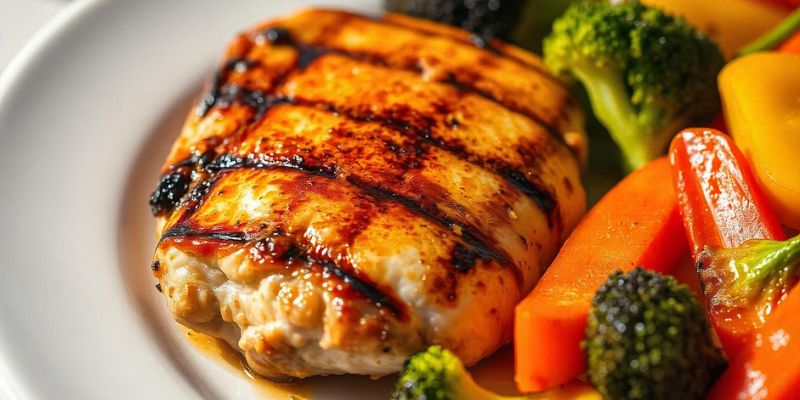
1. Lean Meat (Chicken, Turkey)
Lean meats like chicken and turkey are gold standards for protein lovers. Why? They provide high amounts of protein with minimal fat, making them perfect for muscle growth and maintenance.
A 100-gram serving of chicken breast, for example, contains about 31 grams of protein and just 3.6 grams of fat. It’s easily incorporated into meals—think grilled chicken salads, turkey stir-fries, or roasted pieces alongside your favorite vegetables.
If your goal is lean muscle, this is a no-brainer.
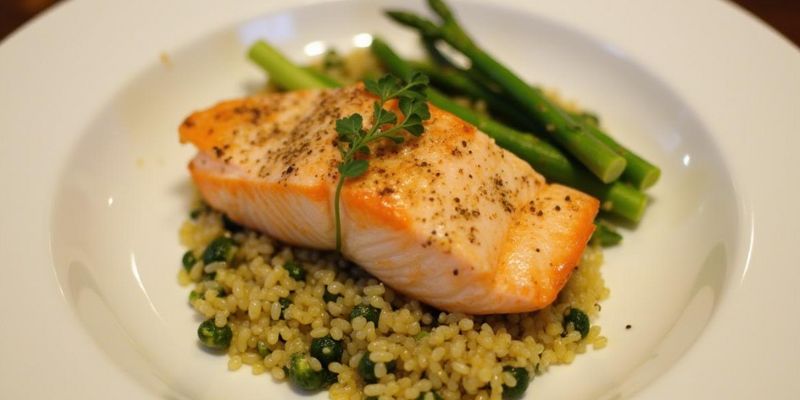
2. Sustainably Sourced Seafood (Salmon, Tuna, Shrimp)
Seafood is incredibly nutrient-dense and a top source of high-quality protein. Salmon not only contains 25 grams of protein per 100 grams but is also packed with omega-3 fatty acids, which are essential for brain and heart health.
Tuna and shrimp are equally powerful. Tuna is a favorite for its convenience and versatility (hello, tuna bowls and salads!), while shrimp is low in calories yet rich in protein.
When choosing seafood, sustainability matters. Look for responsibly sourced options to support the environment while reaping the health benefits.
3. Eggs
Cheap, versatile, and a nutritional powerhouse, eggs are perhaps the most accessible complete protein. Just one egg provides 6 grams of protein alongside vital nutrients like vitamin D and choline, supporting bone health and brain function.
Hard-boil them for a quick snack, or whip up a veggie-packed omelette. Eggs work everywhere, from breakfasts to baking.
Pro tip: Want a protein boost? Pair eggs with avocado for a meal that’s both satisfying and nutrient-rich.
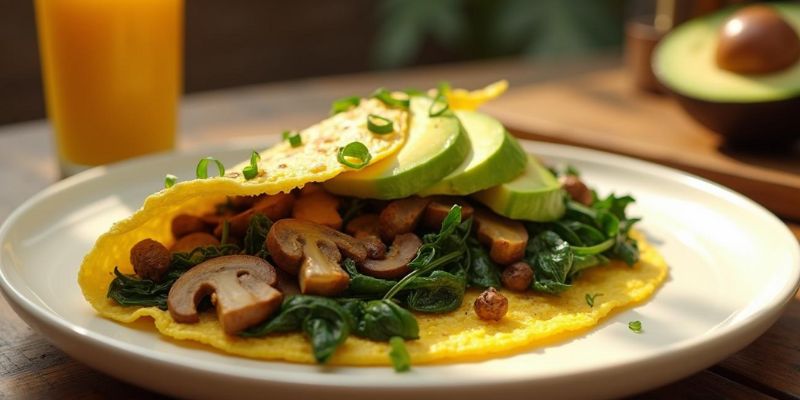
4. Legumes and Pulses (Beans, Lentils, Chickpeas)
For plant-based eaters, legumes like beans, lentils, and chickpeas are essential. They’re rich in protein, fiber, and complex carbohydrates, making them perfect for energy and digestion.
Lentils, for instance, deliver 18 grams of protein per cup while being low in fat and high in iron. Chickpeas (the base of hummus!) bring similar perks. Plus, they’re incredibly versatile—add them to soups, stews, or salads for an easy protein boost.
5. Dairy and Dairy Alternatives (Greek Yogurt, Cottage Cheese)
Dairy products like Greek yogurt and cottage cheese are excellent for delivering high protein with a side of calcium. Greek yogurt boasts 10 grams of protein per 100 grams, making it a favorite for snacks and smoothies.
Prefer non-dairy? Opt for soy-based alternatives, which are packed with protein without the lactose. Pair these with fruits, nuts, or granola for a balanced, high-protein snack.
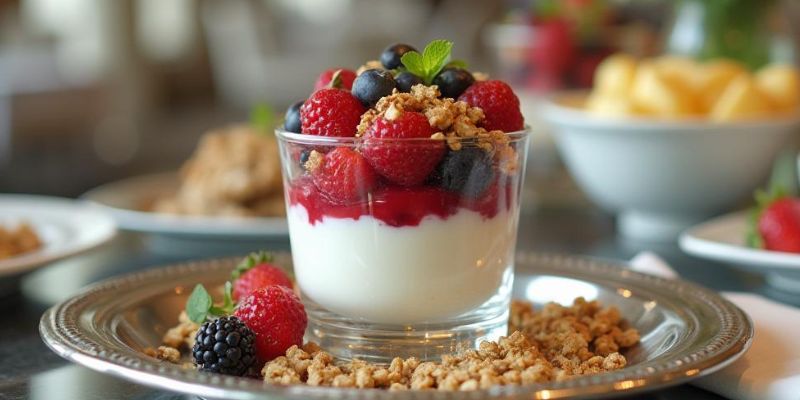
6. Nuts and Seeds (Almonds, Chia Seeds, Pumpkin Seeds)
Nuts and seeds may be small, but they pack a serious punch. Almonds are perfect for snacking, with 6 grams of protein per ounce, plus healthy fats for sustained energy. Meanwhile, chia and pumpkin seeds are excellent for smoothies, oatmeal, or as crunchy toppings.
Chia seeds, in particular, are rich in omega-3s and absorb liquid, making them great for puddings or thickening recipes. Simple and effective!
7. Protein Powders (Whey, Plant-Based Options)
When convenience is key, protein powders are your best friend. Whey protein is one of the most bioavailable options, ideal for muscle recovery post-workout. Plant-based powders like pea or hemp protein are excellent alternatives for vegans or those with dietary restrictions.
Blend your favorite powder into a smoothie or bake it into energy bars—you’ll have a quick, easy protein source without the hassle.
How to Add Powerful Protein to Your Daily Diet
Build a Protein-Focused Meal Plan
Start by spacing your protein across meals. Aim for around 20–30 grams per eating occasion—it’s more effective than loading up in a single meal.
For breakfast, try a spinach and mushroom omelette. Lunch? A grilled chicken salad loaded with greens. And for dinner, go for baked salmon with lentils and veggies.
Snacks matter too! Reach for Greek yogurt with berries or a handful of almonds.
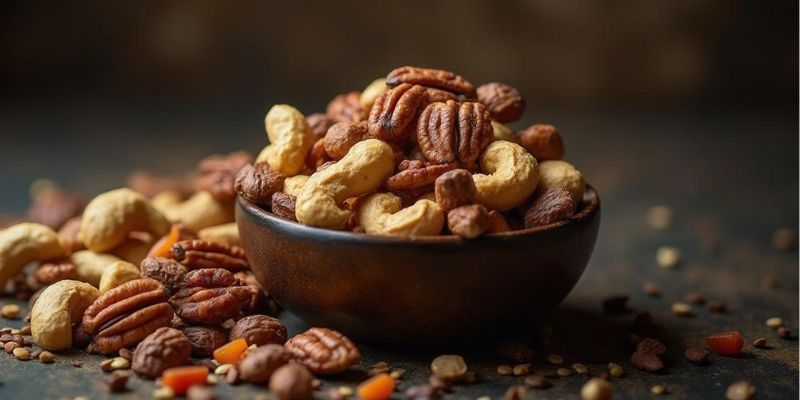
Prepping for Success
Meal prep is your secret weapon here. Cook proteins in bulk—like roasted chicken or hard-boiled eggs—and store them in the fridge for easy grab-and-go options. This way, you won’t fall short of your protein goals even during busy weeks.
Benefits of Prioritizing Powerful Protein
When you prioritize powerful protein, the benefits are transformative.
- Improved Muscle Growth. Protein is vital for building muscle mass and speeding up recovery after workouts.
- Lasting Energy. It helps maintain blood sugar levels, keeping you full and focused all day.
- Overall Health Boost. From glowing skin to strong hair to a better immune system, protein supports your body in countless ways
Discover how to elevate your meals with Fresh Ingredients: 10 Incredible Flavors, a guide to unlocking taste and nutrition.
Common Myths About Powerful Protein
Myth 1 – Too Much Protein is Bad for You
Unless you have kidney issues, high protein intake isn’t harmful for most people. Studies have debunked this myth repeatedly.
Myth 2 – Protein is Only for Athletes
Think protein is just for bodybuilders? Think again. Protein is essential for everyone, supporting health, energy, and longevity.
Myth 3 – You Can Get All Protein from One Source
Variety is key. Mixing animal and plant-based options ensures you get a full profile of nutrients and amino acids.
Closing Thoughts on Powerful Protein
Protein isn’t just food; it’s fuel for a stronger, healthier, and more energized you. By incorporating these seven powerful protein sources into your meals, you’ll see improvements in how you feel and function.
Start small. Cook some chicken, whip up a batch of lentil soup, or experiment with a high-protein smoothie this week. The results will surprise you! Have fun exploring these options and reinventing your meals to prioritize Powerful Protein.
Remember—your body is worth it!
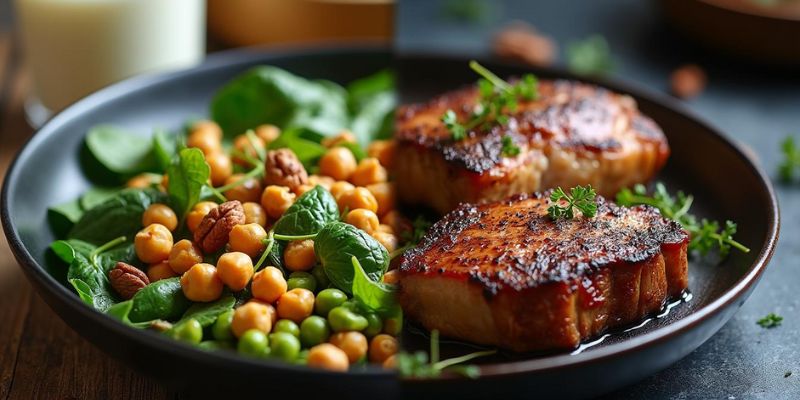
Stay connected with us!
- Follow us on Instagram: @RoastedKitchen25 for daily cooking inspiration.
- Subscribe to our newsletter for exclusive recipes, expert tips, and kitchen hacks straight to your inbox!
Frequently Asked Questions About Powerful Protein
1. What is Powerful Protein, and why is it essential?
Powerful Protein refers to high-quality protein sources that offer excellent nutrient density and bioavailability. These proteins are essential because they support muscle growth, repair tissues, enhance energy, and ensure overall health. Incorporating powerful protein into your diet can help maintain strength, improve recovery, and keep you feeling full longer.
2. How much Powerful Protein do I need daily?
The recommended daily protein intake varies based on factors like age, activity level, and goals. A general guideline is 0.8 grams of protein per kilogram of body weight for sedentary individuals. For active people aiming to build muscle or improve performance, 1.2–2.0 grams per kilogram of body weight is ideal. Spread your intake across all meals for maximum benefit.
3. What are the best plant-based Powerful Protein sources?
Plant-based options like lentils, chickpeas, black beans, quinoa, tofu, tempeh, chia seeds, and hemp seeds are excellent choices. They provide essential amino acids, fiber, and nutrients. Pair these with complementary foods, like rice and beans, for a complete protein profile.
4. Can I get enough Powerful Protein without supplements?
Absolutely! A well-balanced diet with the right mix of powerful protein sources—like lean meats, seafood, eggs, dairy, legumes, nuts, and seeds—can meet most people’s protein needs. Supplements like whey or plant-based protein powders are convenient but not essential unless you have specific dietary gaps or fitness goals.
5. Does eating too much Powerful Protein harm the kidneys?
For healthy individuals, high protein intake does not harm kidney function. Research shows that consuming more protein is safe for most people, especially when balanced with a nutritious diet. However, those with pre-existing kidney conditions may need to consult a healthcare provider to determine the right amount for their needs.
Want to learn even more about integrating powerful protein into your lifestyle? Explore the full blog for tips, recipes, and expert insights!

Food has been at the heart of my life since childhood. My father, a passionate restaurateur, owned and ran Cave Way, a beloved restaurant in Narayanganj, Bangladesh. For 19 wonderful years, Cave Way delighted customers with its warm atmosphere and mouthwatering dishes. It was more than a restaurant; it was a community landmark. When my father passed away, the restaurant’s doors closed, but its legacy lived on in me. As a businessman and food enthusiast, I’ve always felt a connection to the joy and stories that food brings into our lives. Roasted Kitchen is my way of honoring that legacy, sharing my passion, and connecting with others who love cooking as much as I do.

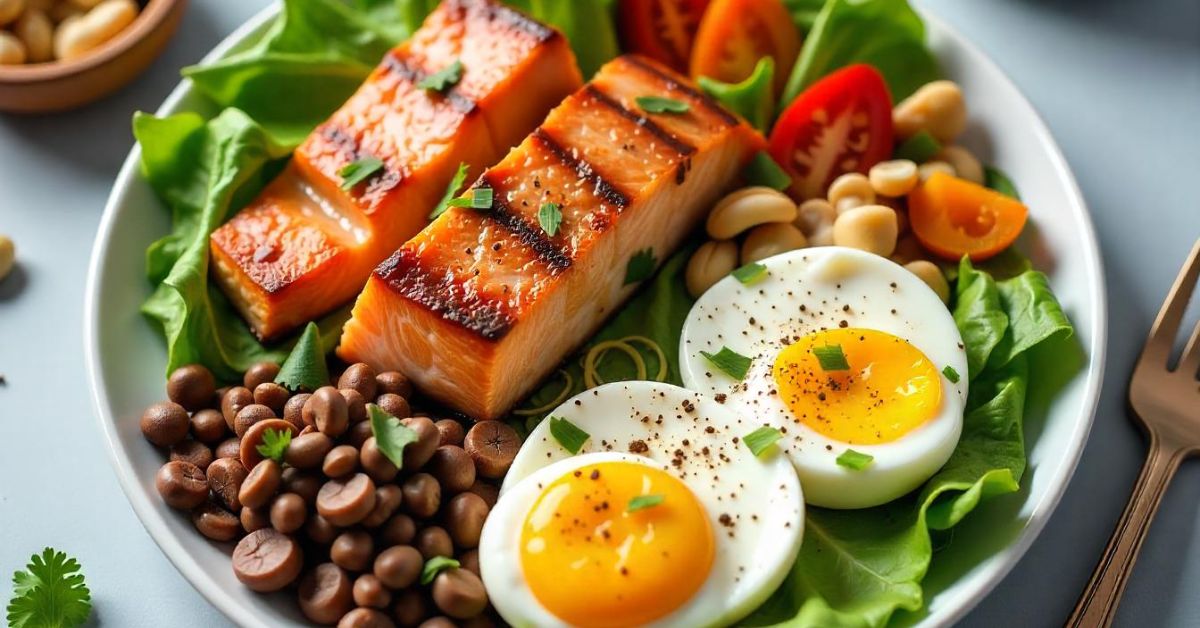
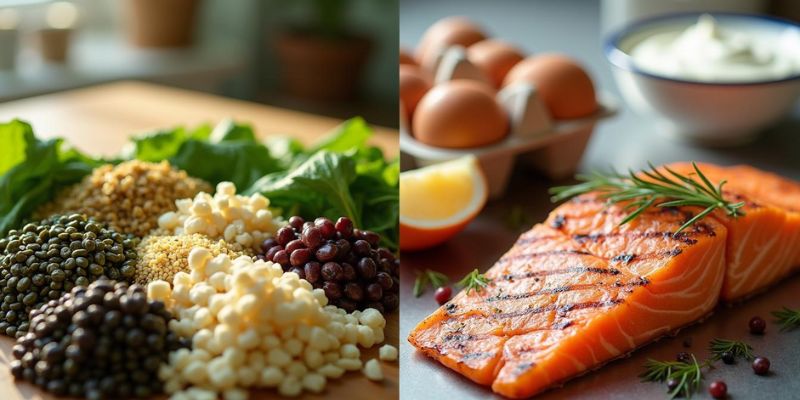








 Subscribe to our free newsletter for tips, tutorials, and insights!
Subscribe to our free newsletter for tips, tutorials, and insights!